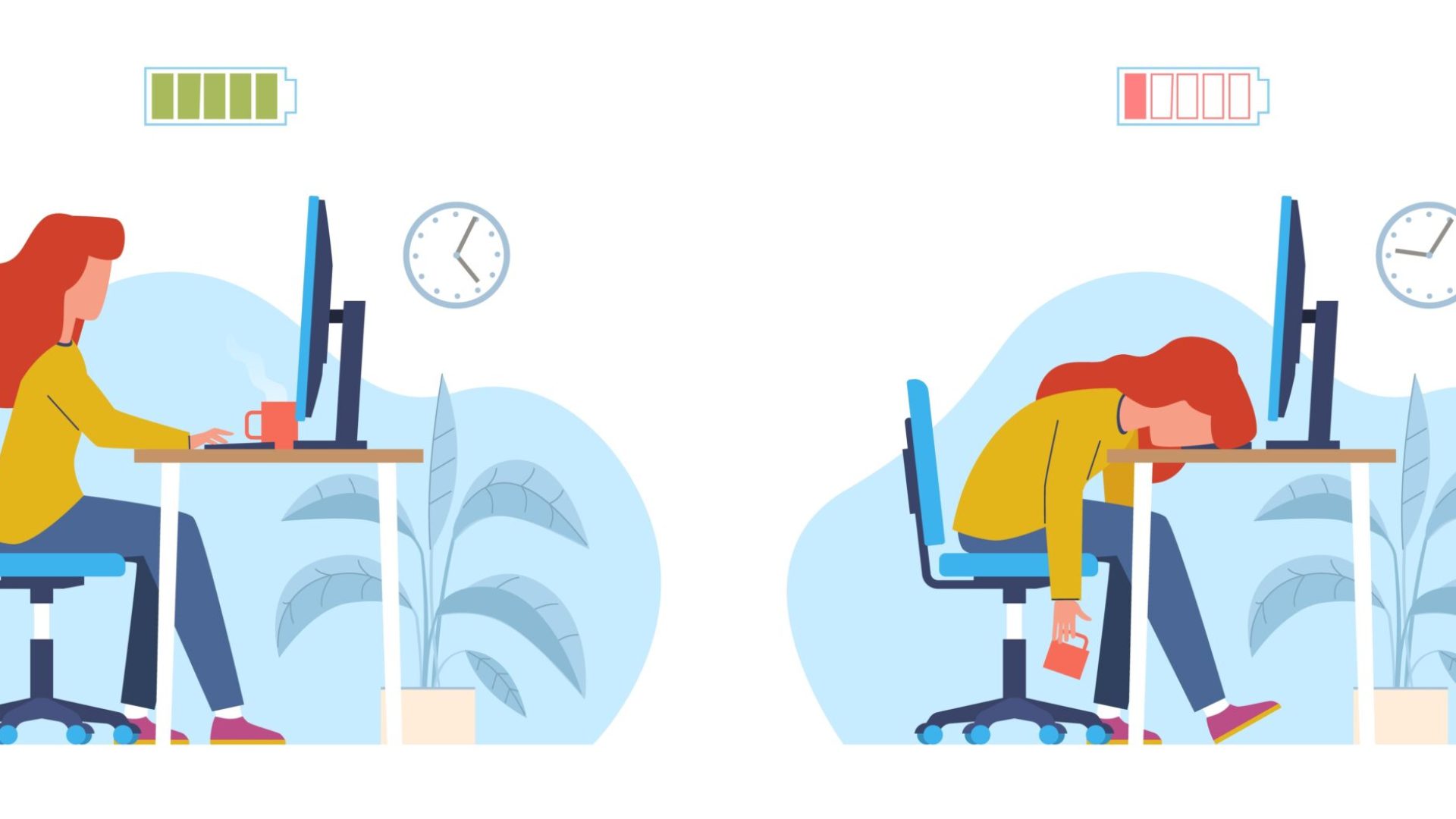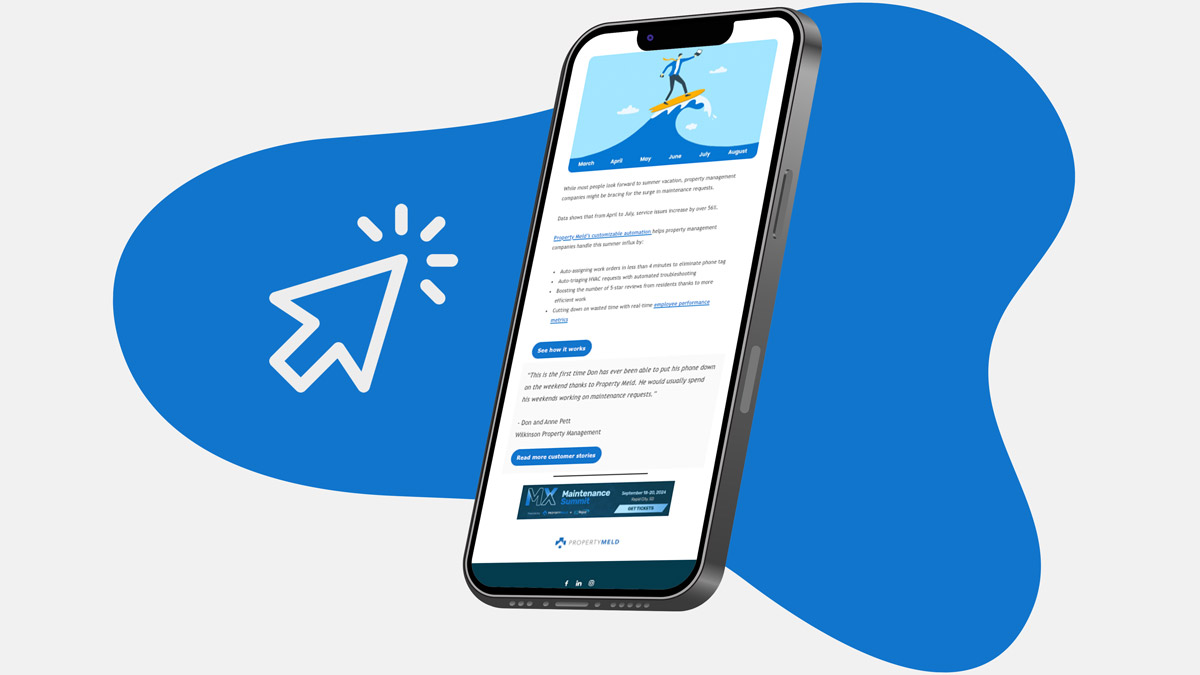The Great Resignation has made today’s job market extraordinarily volatile. Talking about the fear of employee burnout is critical in looking at the future of our workforce.
In part 7 of our Beyond Maintenance Series, our panel of experts discussed the impact of employee burnout in the property management industry and helpful insights on how to retain and recruit valuable employees.
The Great Resignation and the impact on property management companies
In a November 2021 survey from the Bureau of Labor Statistics, 4.5 million Americans quit their jobs. Todd Ortscheid, CEO of Revolution Rental Management, recognized the impact on the industry. With many Americans quitting their jobs, finding and recruiting local quality talent has become difficult. He shared that many of his employees are overseas or in different countries.
“Many tasks and jobs have been heavily outsourced and other efficiencies,” says Ortscheid.
Silvia Armour, Business Development Manager at Property Meld, shared the impact of manual and mundane tasks on employee burnout.
“Every day we have these conversations, we hear about how tasks and duties that property managers once had joy in, is now what is causing them the most stress. The amount of calls and follow up is taking so much time. They don’t feel that there are growth or development opportunities. The bottom line is employee burnout, and they feel stifled to tell their boss they are burnt out. Employees want a work-life balance,” says Armour.
The symptoms of burnout and its impact
Armour emphasized the importance of self-reflection to pinpoint the symptoms that lead to employee turnover. She prefaced by asking questions for the audience to self-reflect.
“Did you lose an employee who was top-performing, who brought good revenue to the company? Who brought morale? That’s a huge loss, and you have to self-reflect. When I lose a top performer, I’m self-reflecting and ask myself what can I do to retain? So when you are done with that self-reflection period, you have to be systematic in the changes you are putting into processes,” says Armour.
In Armour’s scenario, her self-reflection period made her realize that there needs to be more time available for her staff to develop and grow.
With this realization, she implemented automated processes to remove manual and time-consuming tasks from her employees so that they could use that time on professional development and growth.
“I see higher production within my team when there isn’t hard pressure. I can do more with less, and I can have my data working smarter for me. With the team I have, we have the highest producing staff we’ve ever had, with the smallest staff we’ve had in a long time. I don’t want them to feel burned out when their tasks could be easily automated,” says Armour.
Financial ramifications of continuing the same strategy as the industry changes
1) Losing clients to your competitors because you are not able to compete with their level of efficiency.
“People have been forced to these changes, which is one of the few good things that came out of the pandemic. Companies were doing things old-fashioned. They found themselves in a position where their offices were shut down, and they had to work from home and couldn’t do showings. They were forced to modernize. It was painful but good for them in the long run. You need that in order to be efficient.” said Ortscheid.
Ortscheid continued how this impacts business profitability. He shared how companies that implement automated systems, such as Property Meld, decrease costs due to automation. These companies can reduce the cost of their services, and they can snag those clients and serve their residents better.
Alternatively, those that don’t take steps to automate still have to charge that high price because they aren’t efficient.
“They can’t get those customers, or they can’t provide that same level of service to the resident. So residents start leaving, which is resident churn, then you get client (owner) churn because of the resident churn. It ultimately gets back to those efficiencies. If you can have those efficiencies and bring in the revenue, you are in the prime position to compete in the market. But, if you don’t do that, you will continue to watch your market share drop,” shared Ortscheid.
2) Losing money to manual tasks that could easily be automated.
Armour, who has consulted with and listened to hundreds of property management pains over the years, illustrated Ortscheid’s point of the financial impact of not changing.
“I connected with a maintenance coordinator of a property management in 2021. The coordinator said, ‘we aren’t making any changes; we love manual, we love following up with everyone on the phone.’ As if being manual was giving a higher level of service that was top tier when everyone around them was making automated changes to their company. A year later, they came back and said, ‘we don’t know what were we thinking! Let’s talk about automation, and how it can increase efficiency and revenue.’ Now they are starting to see that automation equals dollars and cents, and how that impacts revenue,” said Armour.
Ortscheid added to Armour’s point about the misconception of good customer service. He shared that the change in the demographic clientele of both residents and owners/investors is transitioning towards the millennial generation.
“These people want self-service and to take care of it themselves on their own time. They don’t want to have to make five phone calls or have someone call them; that’s not what people are looking for these days,” says Ortscheid.
Top systematic processes that help with operational efficiency and employee burnout
Ortscheid impressed the importance of automating maintenance and outsourcing low-cost-generating tasks when possible.
“Automation is one of the big ones. We don’t have any employees in the US who handle maintenance. All our maintenance coordination is in Property Meld or automated. Then follow-up is handled by a remote team in Mexico or through Always There Repair handling hotline calls. We are able to manage a lot more maintenance and units with a smaller number of employees because of the automation,” says Ortscheid.
Ortscheid also performs consultations for other property management companies and constantly asks his clients:
- Is it possible to automate this?
- If not, is it possible to have a remote team member take care of it?
- If not, it’s time for boots on the ground and having an in-house team member perform the task.
In-house employees and generating revenue
Armour brought up the importance of having in-house employees focus on tasks that generate company revenue.
“Is typing in a work order in your software bringing value to your company? I don’t think it is. Let’s take the staff you have now, get maintenance under control, like a well-oiled machine. Then ask yourself, ‘what can I do to bring revenue?'” says Armour.
Armour continued to encourage the audience to consider tasks that bring in revenue. Then, consider giving these revenue-generating tasks to your in-house staff to feel more fulfilled in their work.
Ortscheid added, “In the real estate business, we call this concept ‘highest and best use case’ when referring to properties. You can do the same with your employees. Ask yourself, ‘what is the highest and best use case for your employees.’ Is it dealing with garbage disposal troubleshooting? Or is it maintaining a relationship with the client? (The latter) is not something you can automate.”
Improving remote staff morale to prevent employee burnout
Ortscheid dug a little deeper into a Facebook post he recently shared about management’s misconception of morale.
“They (managers) think everything is great because the employees generally aren’t going to come to you and say ‘I’m not happy.’ People don’t feel comfortable doing that, no matter your open-door policy. You need to have a system to collect feedback anonymously,” shared Ortscheid.
Ortscheid also expressed the importance of including remote team members in Zoom meetings and in-person events, so they feel included.
“You want to have full all-hands-on meetings, where everyone is interacting, so they don’t feel that as a remote employee, they are any different than an in-house employee.”
Ortscheid shared that his business had an in-person holiday party last year and invited remote team members. Everyone was able to interact, and remote team members brought their families and pets to introduce to their coworkers.
Practical use takeaways
Ortscheid encouraged people to start off automating maintenance because the majority of calls that companies field are maintenance-related. “Maintenance and leasing is about 90% of calls at property management companies,” said Ortscheid.
Ortscheid suggested allocating just a little extra time to implementing automation into your daily work tasks, and then you will have more time to learn even more skills.
“It’s also important to have a collaborative team and have people give their insights on these ideas. Ask them ‘what are the most important KPIs (key performance indicators)?’ ‘What do you see missing from our business models?'” Armour added.
Let us show you how to utilize automation to do more with less. Make your employees happier and more efficient by removing manual tasks from their day-to-day.
Subscribe to The Maintenance Minute
Join our weekly newsletter where we will share industry insights and maintenance tips derived from our software’s clean data.






